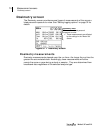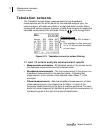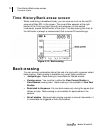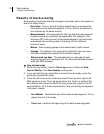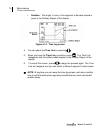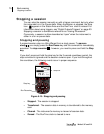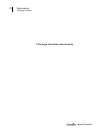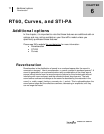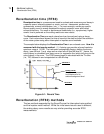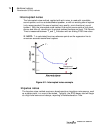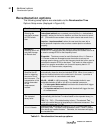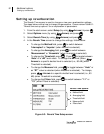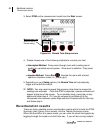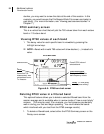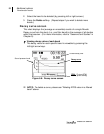
78 Additional options
Reverberation time (RT60)
Models SE and DL
Reverberation time (RT60)
Reverberation time is a measurement used to evaluate and measure sound decay in
a specific space, tailored to speech or music, such as: classrooms, auditoriums,
gymnasiums, concert halls/theatres, (etc..). For room acoustic, results are used to
ensure quality sound is evenly dispersed throughout a specific room with limited
echoes/refractions. For music or performance auditoriums (i.e., symphonies), higher
reverb. time is preferred so the ending results are more robust.
The Reverberation Time over each octave band can be analyzed using a decay
curve. Each octave band shows the time of sound at the start and after the activation
of the noise system using either interrupted or impulse sound methods.
The example below displays the Reverberation Time in an enclosed room. How it is
measured with the impulse method: (1) A starter gun provides a broad impulsive
spectrum noise at 110 dB. The instrument automatically begins plotting the sound
decay (see dB level 1) and stops as the noise falls off (see dB level 2). Hence, the
rate of decay is calculated from decay curve (or regression line) which will give you the
rate of decay in the room. The RT60 measurement is calculated with the Txx time
(i.e., T20) factored in and extrapolated to a 60 dB drop.
Figure 6-1: Reverb Time
Reverberation (RT60) methods
The two methods supported by the SoundPro are the Interrupted noise method
and the Impulse noise method. While the initial sound source used is different,
the ending decay curve results are very similar providing accurate RT60
measurements.
Decay Curve
Drop of sound pressure
from Maximum to its
ambient background level.
dB level 1
dB level2



